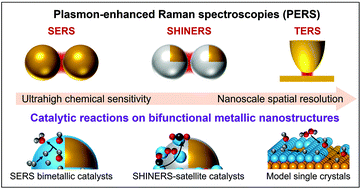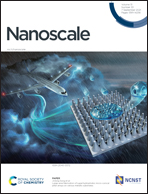Recent advances in plasmon-enhanced Raman spectroscopy for catalytic reactions on bifunctional metallic nanostructures
Abstract
Metallic nanostructures exhibit superior catalytic performance for diverse chemical reactions and the in-depth understanding of reaction mechanisms requires versatile characterization methods. Plasmon-enhanced Raman spectroscopy (PERS), including surface-enhanced Raman spectroscopy (SERS), shell-isolated nanoparticle-enhanced Raman spectroscopy (SHINERS), and tip-enhanced Raman spectroscopy (TERS), appears as a powerful technique to characterize the Raman fingerprint information of surface species with high chemical sensitivity and spatial resolution. To expand the range of catalytic reactions studied by PERS, catalytically active metals are integrated with plasmonic metals to produce bifunctional metallic nanostructures. In this minireview, we discuss the recent advances in PERS techniques to probe the chemical reactions catalysed by bifunctional metallic nanostructures. First, we introduce different architectures of these dual-functionality nanostructures. We then highlight the recent works using PERS to investigate important catalytic reactions as well as the electronic and catalytic properties of these nanostructures. Finally, we provide some perspectives for future PERS studies in this field.

- This article is part of the themed collections: Recent Review Articles, 2021 Nanoscale HOT Article Collection and Advances in Plasmonics and Its Applications


 Please wait while we load your content...
Please wait while we load your content...